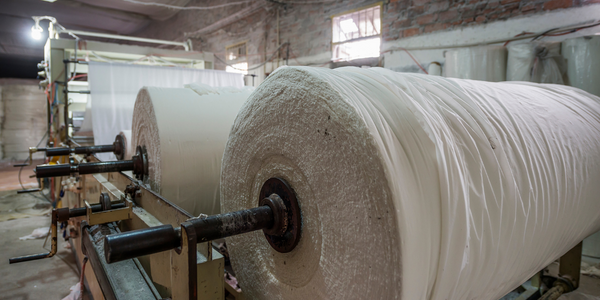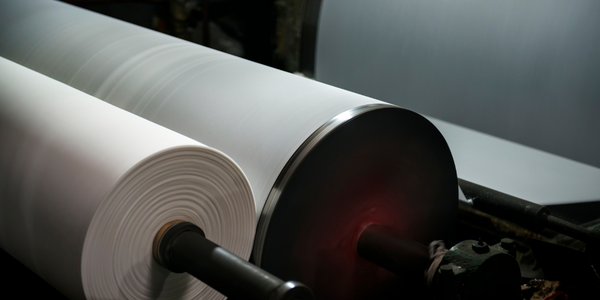技术
- 应用基础设施与中间件 - 事件驱动型应用
- 平台即服务 (PaaS) - 应用开发平台
适用行业
- 金融与保险
- 造纸
适用功能
- 产品研发
用例
- 施工管理
- 库存管理
服务
- 系统集成
关于客户
Infotic SA 是一家成立于 2006 年的哥伦比亚公司,致力于信息和通信技术的集成、外包和项目管理。该公司主要致力于为公共实体提供运营、管理、技术和计算机服务。 Infotic 与全国市长和政府合作,制定和执行由信息技术和通信部牵头的项目,例如 Vive 数字和在线政府。该公司致力于提供高质量的产品和服务,管理项目和软件,提供具有高度合规性、执行力和市场愿景的创新解决方案。
挑战
Infotic SA 是一家为公共和私营实体提供运营、管理、技术和 IT 服务的哥伦比亚公司,在管理其增长和保持其市场领导者地位方面面临着挑战。该公司的主要目标是提高创新能力和生产力。然而,他们的所有内部流程都是手动的,导致任务重复、人为错误、信息丢失、缺乏内部管理控制、没有既定的执行时间、流程效率低下和信息分散。该公司需要对组织文化进行巨大变革,并制定战略来实现流程自动化、提高活动效率并及时管理客户服务。为了实现这些目标,Infotic 选择了 AuraQuantic LCAP 解决方案,这是一个可定制的直观平台,无需编程即可创建新应用程序。
解决方案
在对 Infotic 的主要活动进行详细分析后,确定了数字化转型项目,以实现整个业务线的自动化。实施了 AuraQuantic 低代码数字平台,允许非技术业务用户创建应用程序并即时进行更改。这种动态解决方案促进了管理人员和 IT 团队之间在定义、实施和执行为端到端公司自动化创建的不同应用程序方面的协作。创建的应用程序用于项目管理、收入管理、应收账款管理、银行余额更新、董事会和/或大会会议、报价和合同管理、供应商和联盟合同、借方和贷方票据、文档管理和计费。每个应用程序都集成了来自其他流程和应用程序的所有必要信息,从而可以有效地跟踪、控制和监视活动和资源。
运营影响
数量效益

Case Study missing?
Start adding your own!
Register with your work email and create a new case study profile for your business.
相关案例.

Case Study
Wireless Improves Efficiency in Compressed Air Systems
Hollingsworth and Vose wanted to improve the efficiency of their compressed air system, lower the electricity expense component of manufacturing cost in their commodity industry, and conserve energy leading to lowered greenhouse gas emissions. Compressed air systems degrade over time and become leaky and inefficient. Hollingsworth and Vose wanted to increase the frequency of system inspections without paying the high cost of manual labor.

Case Study
Real-time In-vehicle Monitoring
The telematic solution provides this vital premium-adjusting information. The solution also helps detect and deter vehicle or trailer theft – as soon as a theft occurs, monitoring personnel can alert the appropriate authorities, providing an exact location.“With more and more insurance companies and major fleet operators interested in monitoring driver behaviour on the grounds of road safety, efficient logistics and costs, the market for this type of device and associated e-business services is growing rapidly within Italy and the rest of Europe,” says Franco.“The insurance companies are especially interested in the pay-per-use and pay-as-you-drive applications while other organisations employ the technology for road user charging.”“One million vehicles in Italy currently carry such devices and forecasts indicate that the European market will increase tenfold by 2014.However, for our technology to work effectively, we needed a highly reliable wireless data network to carry the information between the vehicles and monitoring stations.”

Case Study
Process Predictive Analysis in Pulp and Paper Mill
Common paper breaks consequently lead up to 60 minutes of downtime, delaying a potential $10K per hour of production value process. Thus, defective products cause financial and damage company's reputation. Improving quality and reducing defect rates can generate millions of dollars of revenue per year for your company.

Case Study
Safety First with Folksam
The competitiveness of the car insurance market is driving UBI growth as a means for insurance companies to differentiate their customer propositions as well as improving operational efficiency. An insurance model - usage-based insurance ("UBI") - offers possibilities for insurers to do more efficient market segmentation and accurate risk assessment and pricing. Insurers require an IoT solution for the purpose of data collection and performance analysis

Case Study
Smooth Transition to Energy Savings
The building was equipped with four end-of-life Trane water cooled chillers, located in the basement. Johnson Controls installed four York water cooled centrifugal chillers with unit mounted variable speed drives and a total installed cooling capacity of 6,8 MW. Each chiller has a capacity of 1,6 MW (variable to 1.9MW depending upon condenser water temperatures). Johnson Controls needed to design the equipment in such way that it would fit the dimensional constraints of the existing plant area and plant access route but also the specific performance requirements of the client. Morgan Stanley required the chiller plant to match the building load profile, turn down to match the low load requirement when needed and provide an improvement in the Energy Efficiency Ratio across the entire operating range. Other requirements were a reduction in the chiller noise level to improve the working environment in the plant room and a wide operating envelope coupled with intelligent controls to allow possible variation in both flow rate and temperature. The latter was needed to leverage increased capacity from a reduced number of machines during the different installation phases and allow future enhancement to a variable primary flow system.








